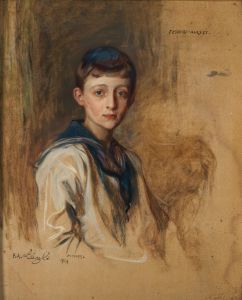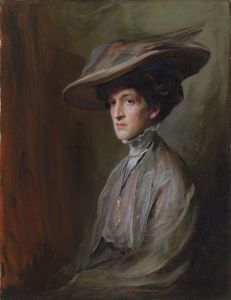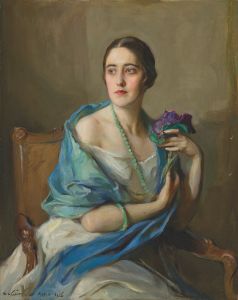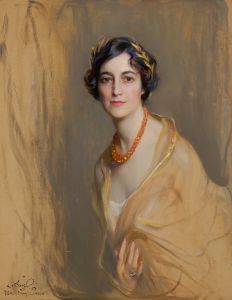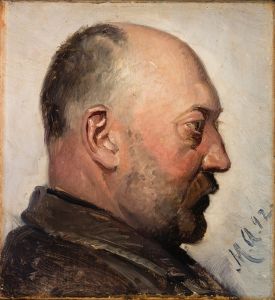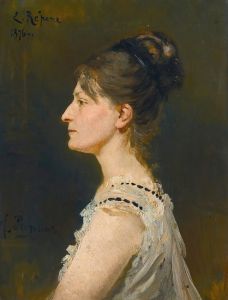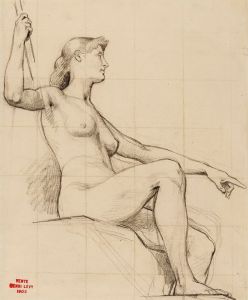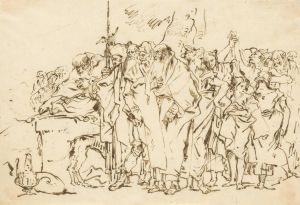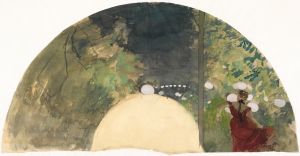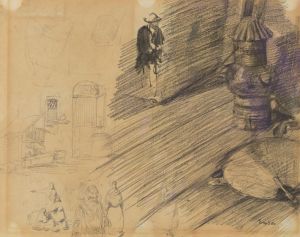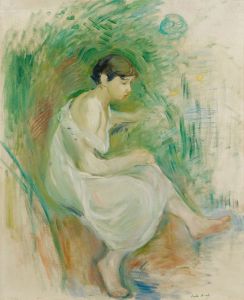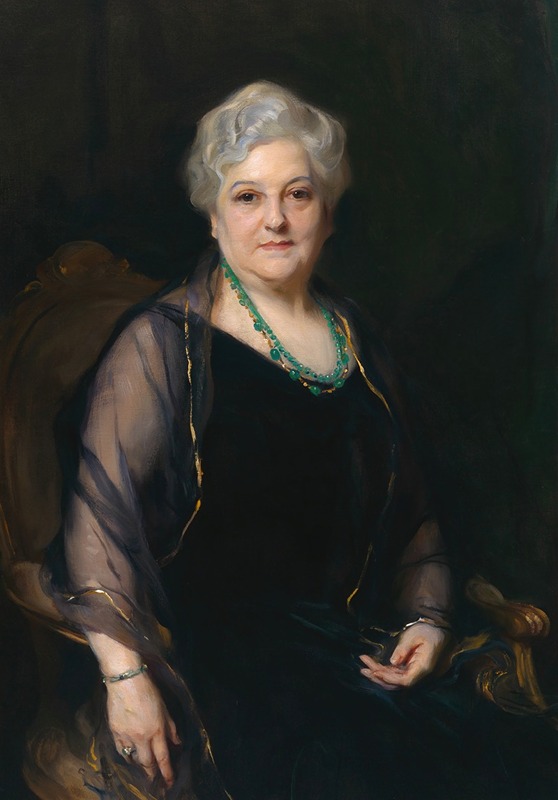
Iphigenia Wise Ochs
A hand-painted replica of Philip Alexius de László’s masterpiece Iphigenia Wise Ochs, meticulously crafted by professional artists to capture the true essence of the original. Each piece is created with museum-quality canvas and rare mineral pigments, carefully painted by experienced artists with delicate brushstrokes and rich, layered colors to perfectly recreate the texture of the original artwork. Unlike machine-printed reproductions, this hand-painted version brings the painting to life, infused with the artist’s emotions and skill in every stroke. Whether for personal collection or home decoration, it instantly elevates the artistic atmosphere of any space.
Philip Alexius de László was a renowned Anglo-Hungarian painter known for his portraits of royal and notable figures in the late 19th and early 20th centuries. One of his works, "Iphigenia Wise Ochs," captures the likeness of Iphigenia Wise Ochs, a member of a prominent family with significant contributions to American journalism and society.
Iphigenia Wise Ochs was the daughter of Adolph S. Ochs, the influential publisher of The New York Times. Her father is credited with transforming the newspaper into a leading publication in the United States. The Ochs family was well-connected and respected, and Iphigenia was part of this legacy. Her portrait by de László reflects the status and cultural milieu of her family during this period.
Philip de László was born in Budapest in 1869 and became one of the most sought-after portrait artists of his time. He studied at the National Academy of Art in Budapest and later in Munich and Paris, honing his skills and developing a style that combined realism with a keen sensitivity to his subjects' personalities. De László's ability to capture the essence of his sitters made him a favorite among European aristocracy and American elites.
The portrait of Iphigenia Wise Ochs is an example of de László's mature style, characterized by its elegant composition and attention to detail. The painting likely reflects the fashion and aesthetic preferences of the early 20th century, a time when portraiture was a means of documenting and celebrating personal and familial achievements. De László's portraits often convey a sense of dignity and poise, qualities that would have been important to the Ochs family.
While specific details about the creation of the "Iphigenia Wise Ochs" portrait are not widely documented, it is reasonable to assume that the commission was influenced by the Ochs family's social standing and their desire to have their daughter's likeness captured by a prominent artist. Portraits during this era were not only personal mementos but also statements of identity and status.
De László's work, including the portrait of Iphigenia Wise Ochs, is part of a broader tradition of portraiture that served both artistic and social functions. His paintings are housed in various collections and continue to be appreciated for their technical skill and historical significance. The portrait of Iphigenia Wise Ochs stands as a testament to the interconnected worlds of art, society, and media in the early 20th century.
Overall, the painting is a reflection of the era's cultural values and the role of portraiture in commemorating influential figures and families. Philip de László's legacy as a portrait artist endures, with his works offering insights into the personalities and social dynamics of his time.





